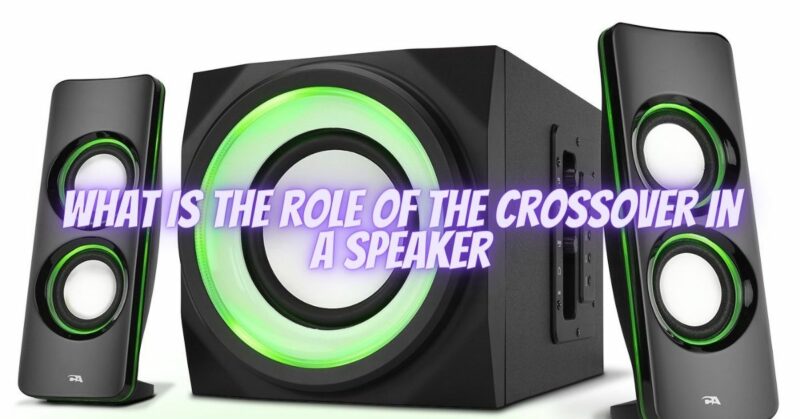Crossovers are essential components in speaker systems that ensure accurate sound reproduction by dividing the audio signal into different frequency ranges and directing them to the appropriate drivers. By assigning specific frequency ranges to different drivers, crossovers enable each driver to perform optimally, resulting in a balanced and cohesive audio output. In this article, we will explore the role of crossovers in speaker systems and their importance in achieving accurate sound reproduction.
- Frequency Division:
The primary role of a crossover is to divide the audio signal into distinct frequency bands:
a. Low-pass filter: The low-pass filter in a crossover directs low-frequency signals to the woofer or subwoofer, which specializes in reproducing bass and lower midrange frequencies. This ensures that the bass content is accurately handled by the appropriate driver, reducing distortion and maintaining clarity.
b. High-pass filter: The high-pass filter directs high-frequency signals to the tweeter, supertweeter, or midrange driver, which excel at reproducing treble and midrange frequencies. This allows these drivers to focus on their designated frequency ranges, producing detailed and accurate sound reproduction.
- Driver Protection:
Crossovers play a crucial role in protecting the speakers’ drivers:
a. Frequency isolation: By directing specific frequency ranges to the appropriate drivers, crossovers prevent excessive excursion or strain on drivers not designed to handle those frequencies. This protects the drivers from damage and ensures their longevity.
b. Power handling: Crossovers can also incorporate power handling components, such as resistors or capacitors, to ensure that each driver receives the appropriate power level. This prevents overpowering of certain drivers and helps maintain their optimal performance.
- Phase Alignment:
Crossovers aid in achieving proper phase alignment among drivers:
a. Phase coherence: By carefully aligning the phase response of each driver, crossovers ensure that sound waves generated by different drivers reach the listener’s ears in sync, minimizing phase cancellations or interference. This results in improved imaging, soundstage, and overall cohesiveness of the audio reproduction.
- Impedance Matching:
Crossovers can help achieve impedance matching between the amplifier and the speaker system:
a. Impedance correction: Crossovers can include components such as inductors or resistors to adjust the electrical impedance of the speaker system. This helps ensure that the amplifier sees a suitable load, preventing impedance mismatches that could affect the performance and stability of the audio system.
- Crossover Types:
Crossovers come in various types, including passive and active crossovers:
a. Passive crossovers: Passive crossovers are commonly used in most home audio systems and are built into the speaker cabinets. They are simple and require no additional power source, relying on passive components like capacitors, inductors, and resistors to divide the frequency ranges.
b. Active crossovers: Active crossovers are electronic crossovers that require external power and are typically used in more advanced audio systems. They offer greater flexibility in adjusting crossover points and slopes, allowing for more precise customization of the audio reproduction.
Conclusion:
Crossovers play a crucial role in speaker systems by dividing the audio signal into distinct frequency ranges, directing them to the appropriate drivers, and ensuring accurate sound reproduction. By enabling each driver to handle its designated frequency range, crossovers protect the drivers, achieve phase coherence, and optimize the overall performance of the speaker system. Whether in passive or active form, crossovers are integral to achieving a balanced and cohesive audio experience, providing accurate frequency response, imaging, and soundstage. Understanding the role of crossovers allows us to appreciate their importance in delivering high-quality audio reproduction in a wide range of speaker systems.


